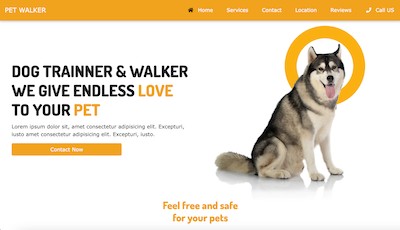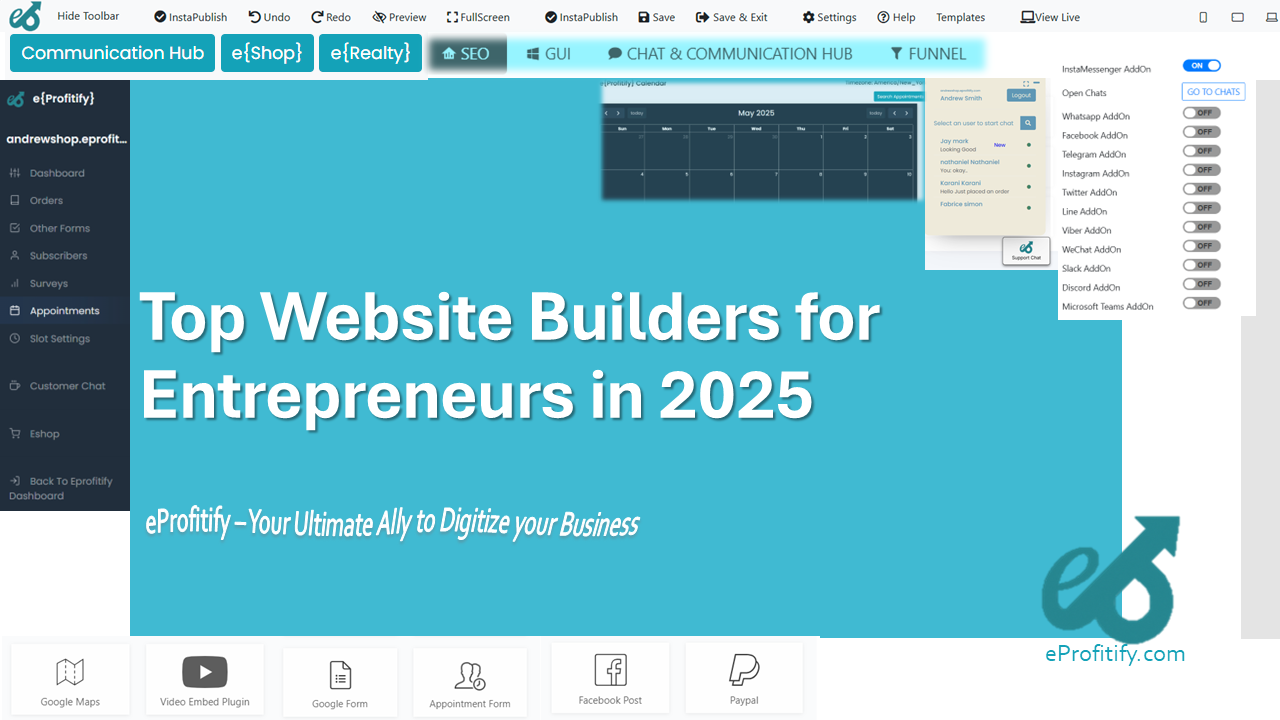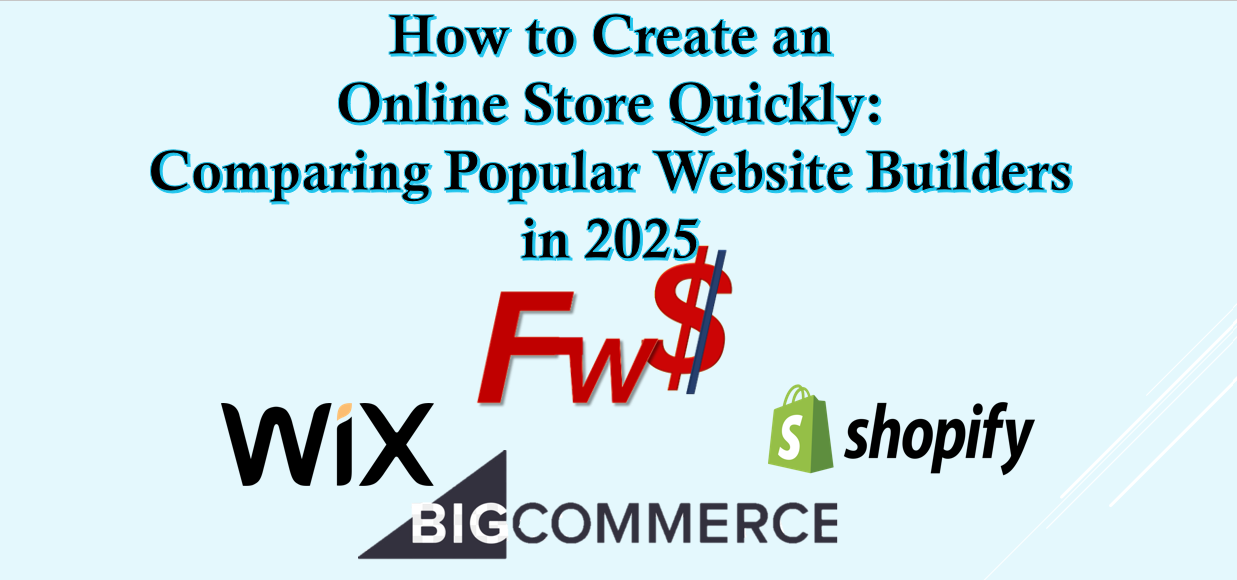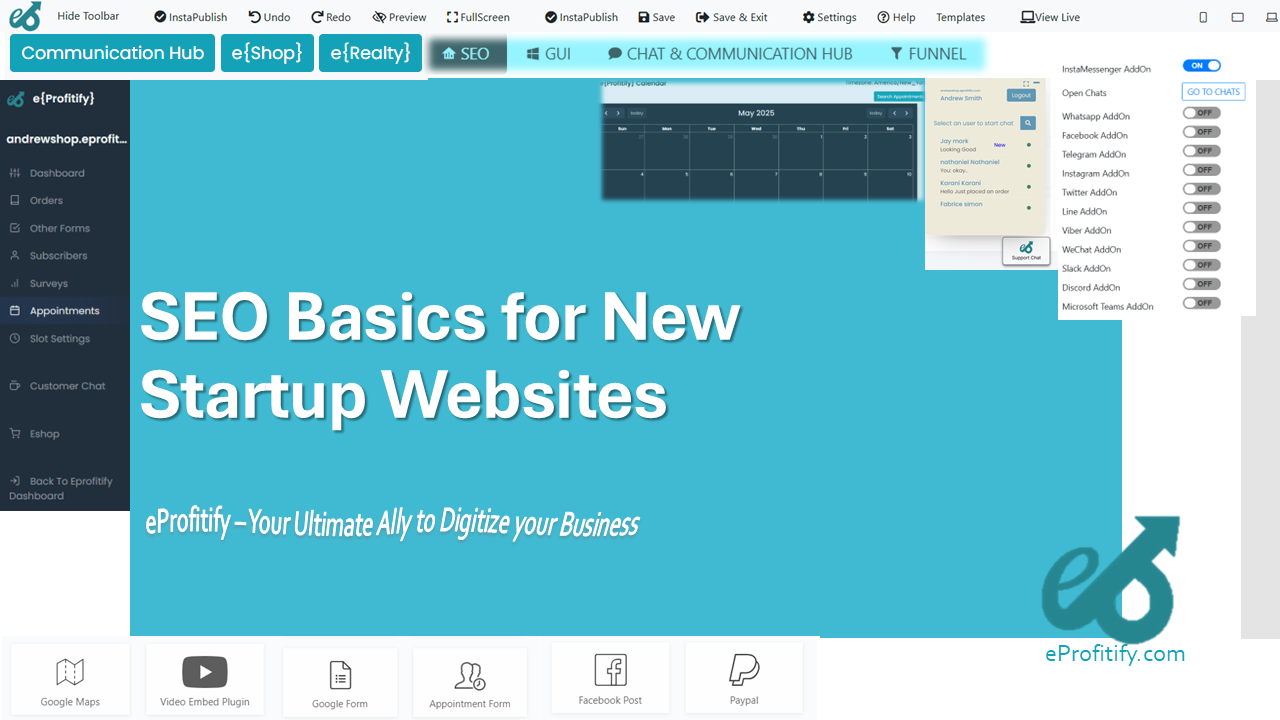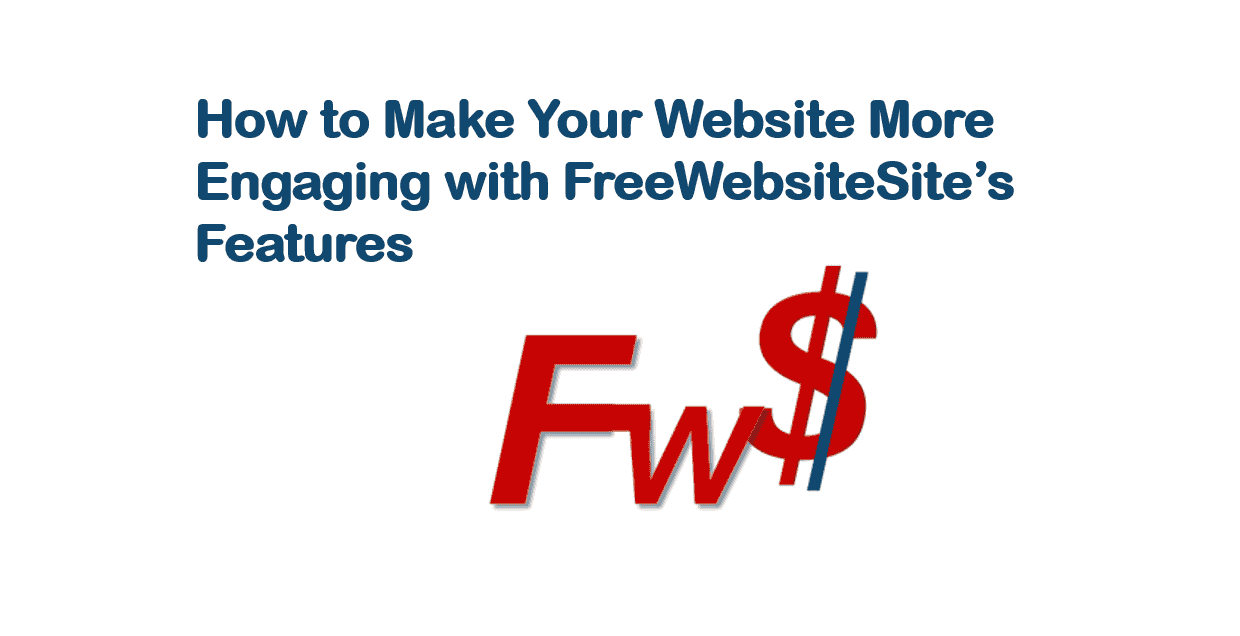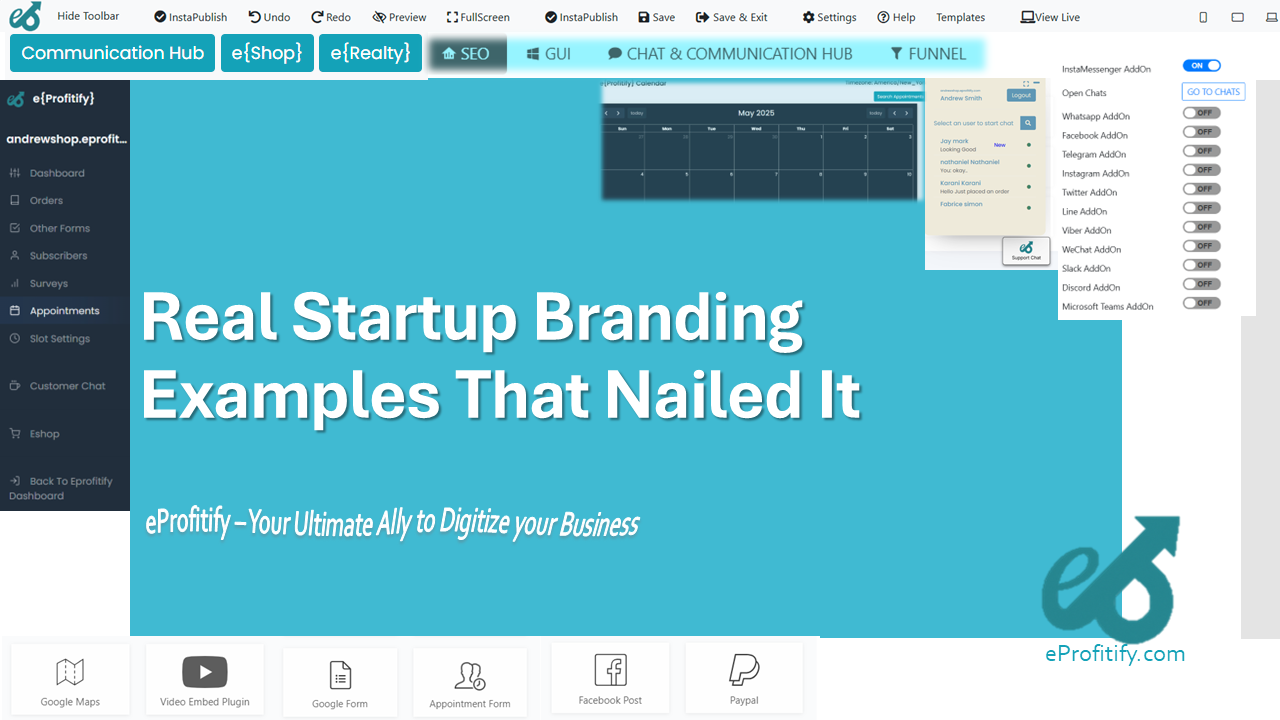5 Website Strategies Every Marketer Should Be Using
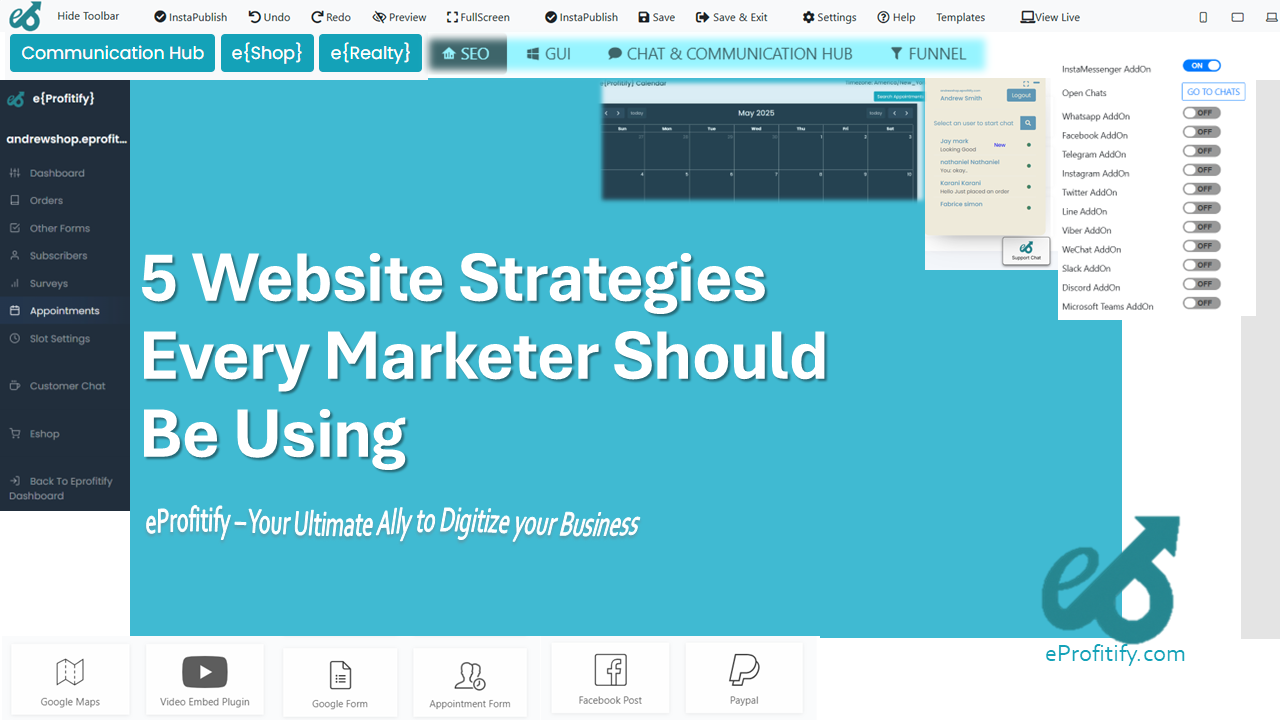
5 Website Strategies Every Marketer Should Be Using
In today’s digitally driven landscape, a website is more than just an online brochure—it’s a dynamic tool for lead generation, customer engagement, and revenue growth. However, simply having a website isn’t enough. Marketers must adopt strategic approaches to stay competitive. Below, we outline five essential website strategies, supported by data, and highlight how eProfitify—a leading website publishing and management platform—can help streamline execution.
1. Mobile-First Optimization
Statistic: Over 58% of global website traffic comes from mobile devices, and Google reports that 61% of users are unlikely to return to a site they had trouble accessing on mobile (Statista, 2023).
Mobile optimization is non-negotiable. A responsive design ensures seamless navigation across devices, improves user experience (UX), and boosts SEO rankings. Google’s mobile-first indexing prioritizes mobile-optimized sites, making this critical for visibility.
How eProfitify Helps:
eProfitify offers mobile-responsive templates that automatically adapt to any screen size. Its built-in analytics track mobile user behavior, enabling marketers to refine layouts and CTAs. Additionally, its integrated instant messaging feature allows real-time engagement with mobile visitors, reducing bounce rates and increasing conversions.
2. SEO-Driven Content Marketing
Statistic: 68% of online experiences begin with a search engine, and 75% of users never scroll past the first page of results (BrightEdge, 2023).
Quality content is the backbone of SEO. Regularly publishing blogs, videos, and guides that answer user queries builds authority and drives organic traffic. Tools like keyword research, meta-tag optimization, and internal linking are vital for ranking.
How eProfitify Helps:
eProfitify’s CMS includes AI-powered SEO tools that analyze keywords, suggest content improvements, and automate meta descriptions. Its content management system simplifies publishing, while CRM integration lets marketers tailor content to audience segments. For example, pairing blog posts with personalized email campaigns via eProfitify’s CRM can boost retention by 27% (Forrester).
3. Personalized User Experience (UX)
Statistic: 80% of consumers are more likely to purchase from brands offering personalized experiences (Epsilon), and sites with strong UX see conversion rates 400% higher than industry averages (Forrester).
Tailoring UX based on user behavior—like dynamic landing pages or product recommendations—creates a frictionless journey. A/B testing tools and heatmaps help identify pain points, while chatbots can guide users in real time.
How eProfitify Helps:
eProfitify’s CRM and analytics tools segment audiences based on demographics, behavior, and purchase history. Marketers can use these insights to customize CTAs, offers, and layouts. For instance, first-time visitors might see a welcome discount via pop-up, while returning users receive product recommendations. The platform’s appointment management system also personalizes scheduling for service-based businesses, reducing no-shows by 30%.
4. Ecommerce Integration
Statistic: Global ecommerce sales are projected to hit $6.9 trillion by 2024, with mobile commerce accounting for 42% of purchases (Insider Intelligence, 2023).
An intuitive ecommerce platform is essential for converting visitors into customers. Features like secure payment gateways, inventory management, and one-click checkouts streamline the buying process.
How eProfitify Helps:
eProfitify’s integrated ecommerce tools simplify setting up product pages, managing orders, and processing payments. Its AI-driven upsell recommendations can increase average order value by 15%. The platform also syncs with social media shops, enabling cross-channel selling.
5. Conversion Rate Optimization (CRO)
Statistic: Improving CRO by just 0.1% can increase revenue by up to 5% (Unbounce). Strategies like clear CTAs, trust signals (e.g., reviews), and fast load times (pages loading in 2 seconds have a 9% lower bounce rate) are critical.
CRO relies on data-driven tweaks. Heatmaps, session recordings, and A/B testing tools help identify what’s working—and what’s not.
How eProfitify Helps:
eProfitify’s analytics dashboard tracks conversion funnels in real time. Marketers can test variations of landing pages, CTAs, and pricing strategies. For example, pairing a limited-time offer (managed via the CRM) with a streamlined checkout process can lift conversions by 20%. The platform’s instant messaging feature also addresses last-minute concerns, reducing cart abandonment.
Why eProfitify Stands Out
eProfitify consolidates essential tools—instant messaging, appointment management, ecommerce, CRM, and SEO—into a single platform, eliminating the need for multiple subscriptions. Case studies show businesses using eProfitify achieve 35% faster website load times, 50% higher engagement via chatbots, and 25% more conversions through automated follow-ups.
Conclusion
The digital landscape demands agility, data-driven decisions, and seamless integration. By prioritizing mobile optimization, SEO, personalization, ecommerce, and CRO, marketers can future-proof their strategies. Platforms like eProfitify not only simplify execution but also unify critical functions, enabling teams to focus on growth. In an era where 88% of users won’t return after a bad experience (SOCi), tools like eProfitify are indispensable for staying ahead.
